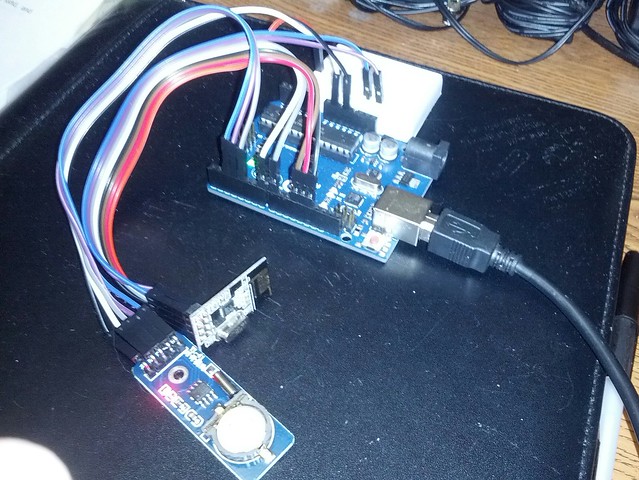Some of you might have noticed that I haven't been around lately and have been slow to answer non-business related emails or PMs. Some of you also might know that I am a habitual project starter and constant tinkerer. I have been working that last few weeks on my next project, to fully automate/monitor my greenhouse using cheap, open source, hardware and software.
Here is a quick outline of my goals for this project.
Monitor
I realize that there are already products that do all of these things on the market today. Most of them are geared towards large greenhouse operations with the capital to afford them. At a minimum these systems run in the $5000 range. My goal is to pull it off for 1/10th the price and learn a bunch of useful stuff along the way.
I am sure many who read this will wonder, "Why automate all of this?". Well, I say, "why not?" Honestly, it just gives me an excuse to learn and grow and maybe even share. I believe that one day, be it due to space exploration or climate change, people will need to grow much of their food hydroponically in environmentally controlled indoor areas, finding a way to do it cheaply and hassle-free is in everyone's best interest.
For a little background, I am a computer network engineer by trade, so I have a big advantage attacking some of these goals. I have no formal training in programming, which is the majority of the work involved in this project. I have a small amount training in electrical engineering, so the wiring and building of circuits will somewhat of a hurdle as well.
I will be building this system using the Arduino platform for the sensor/relay nodes and the Raspberry Pi platform for the control node. The Pi will also drive a touch screen display mounted inside the greenhouse that displays real-time data collected from the sensor nodes. This will be a long term project, probably on the scope of 12-18 months, so there will likely be many hardware changes (I have already had to switch Arduino platforms due to limitations).
I look forward to what the growers here have to say about this. I also look forward to input from any of you that are programmers, engineers, web developers or just garden-variety geeks.
Thanks for stopping by. I will post an update with the current progress shortly.
Brian Holmes - Owner
The Ghost Pepper Store
Here is a quick outline of my goals for this project.
Monitor
- Temperature and humidity
- CO2 levels
- Ambient light intensity
- PH and TDS levels in 2 separate hydroponic reservoirs
- Security camera/time lapse filming
- Reservoir fluid temperature
- Reservoir fluid level
- Supplemental lighting
- Hydroponics water pumps
- Hydroponics air pumps
- Hydroponics UV sterilization
- pH adjustments
- Nutrient level adjustments
- Hydroponic reservoir fluid level adjustment
- Wireless (2.4GHz) non-802.11 communication between sensor/relay nodes and control node.
- 802.11n wireless connected control node with traditional TCP/IP stack
- Control node internet connected web server for remote control by PC or smartphone
- Control node touch screen display for monitoring/graphing/manual controls
I realize that there are already products that do all of these things on the market today. Most of them are geared towards large greenhouse operations with the capital to afford them. At a minimum these systems run in the $5000 range. My goal is to pull it off for 1/10th the price and learn a bunch of useful stuff along the way.
I am sure many who read this will wonder, "Why automate all of this?". Well, I say, "why not?" Honestly, it just gives me an excuse to learn and grow and maybe even share. I believe that one day, be it due to space exploration or climate change, people will need to grow much of their food hydroponically in environmentally controlled indoor areas, finding a way to do it cheaply and hassle-free is in everyone's best interest.
For a little background, I am a computer network engineer by trade, so I have a big advantage attacking some of these goals. I have no formal training in programming, which is the majority of the work involved in this project. I have a small amount training in electrical engineering, so the wiring and building of circuits will somewhat of a hurdle as well.
I will be building this system using the Arduino platform for the sensor/relay nodes and the Raspberry Pi platform for the control node. The Pi will also drive a touch screen display mounted inside the greenhouse that displays real-time data collected from the sensor nodes. This will be a long term project, probably on the scope of 12-18 months, so there will likely be many hardware changes (I have already had to switch Arduino platforms due to limitations).
I look forward to what the growers here have to say about this. I also look forward to input from any of you that are programmers, engineers, web developers or just garden-variety geeks.
Thanks for stopping by. I will post an update with the current progress shortly.
Brian Holmes - Owner
The Ghost Pepper Store





